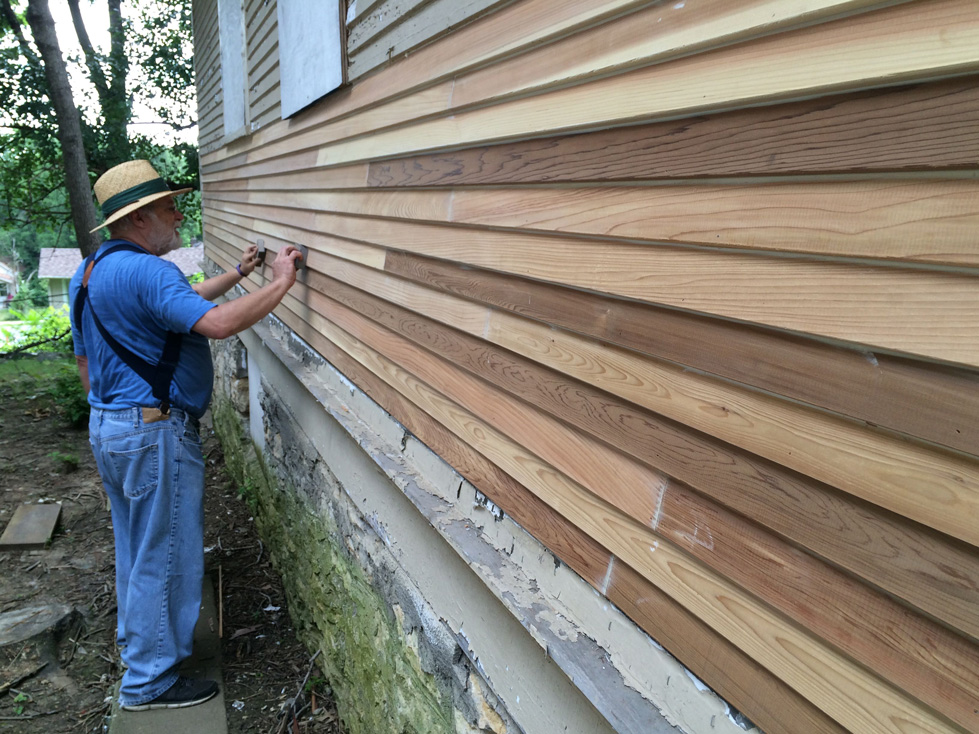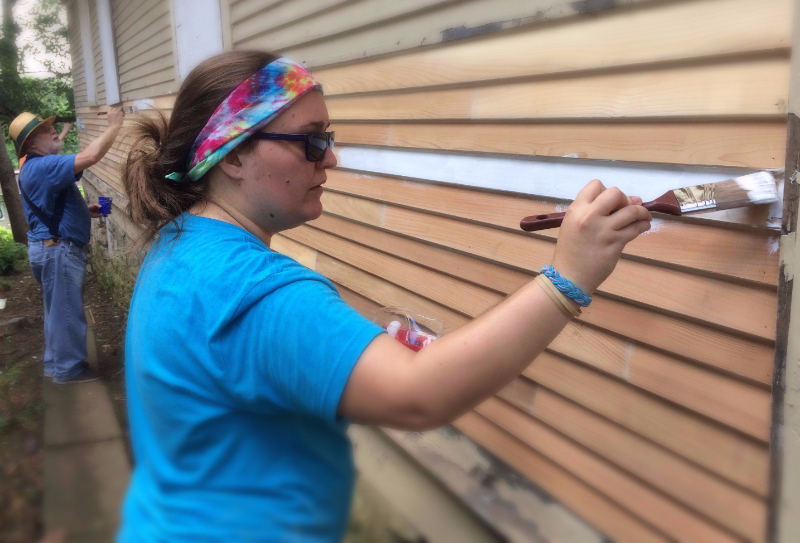“In terms of how we prioritize, a lot of people, when they think of sustainable design will immediately think of a renewable energy source you can strap on the house,” Knoll said. “But that’s really the last think you should think of. Once we’ve maximized the building envelope and equipment efficiency going into the home, we’ve done so much to make the house efficient that it reduces how much renewable energy source we need.”
Knoll said Historic Green usually goes from least to most expensive repairs, and they try to keep as much of the original structure as possible.
“As a preservationist would tell you, there’s nothing more green than a building that’s already standing,” he said. “We’re working hard to keep as much of the existing building standing.”
Once the ART house is complete, it will have the following components:
- An air-conditioning system that is 95-percent efficient.
- Insulated tank water heater. Knoll said the area has hard water, so an instant water heater wasn’t the best option for the house.
- Replaced or restored windows.
- Native or adaptive landscaping, relying on the plants to absorb much of the storm water in the backyard, which has a large slope.
- Building materials that contain a high level of recycled content or reclaimed materials.
- Cabinets and tile from Habitat ReStore.
- All ENERGY STAR appliances.
From Kansas City to New Orleans and back again
Knoll co-founded Historic Green in 2007 in the wake of hurricanes Katrina and Rita. At first, Knoll, who served as a leader in the U.S. Green Building Council, was looking for a way the council could help victims of the disasters, but he realized something was missing.

Ken Riead, an at-large Historic Green board member, sands the siding of the ART house on a Saturday work day.
“There was a clear need for a new kind of group that focuses on sustainability,” Knoll said.
With that strong concept, the organization created “Spring Greening” events where students and volunteers were invited to New Orleans to help with community projects in the lower 9th Ward. During these events, 50 to 400 volunteers helped Historic Green:
- Replace incandescent lights with compact fluorescent lights in about 70 homes.
- Install radiant and air-sealing services in about 16 homes.
- Provide selective demolition and deconstruction in seven homes.
- Restore windows in eight homes.
- Install rain gardens in 24 properties including homes and businesses.
- Provide basic home repairs in about 20 homes.
- Install solar security lighting and a rain garden in a playground.
- Create five community gardens on previously abandoned land.
After working the “Spring Greening” events in New Orleans for a few years, Knoll said he realized some similarities between the natural-disaster affected areas in the south and some neighborhoods in Kansas City, MO.
“I realized ‘this is the same place, this is the same neighborhood,’” he said, referring to the neighborhoods he would drive through to get home from the airport after traveling to New Orleans. “It just hasn’t been hit by a hurricane. In this case, due to an economic disaster, the issues are very similar.”
That’s when members of Historic Green started talking about what they could do in their own town.
Story continues on next page…





